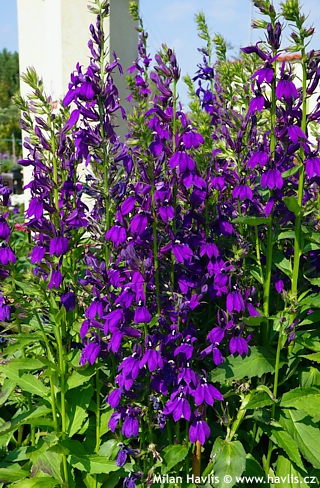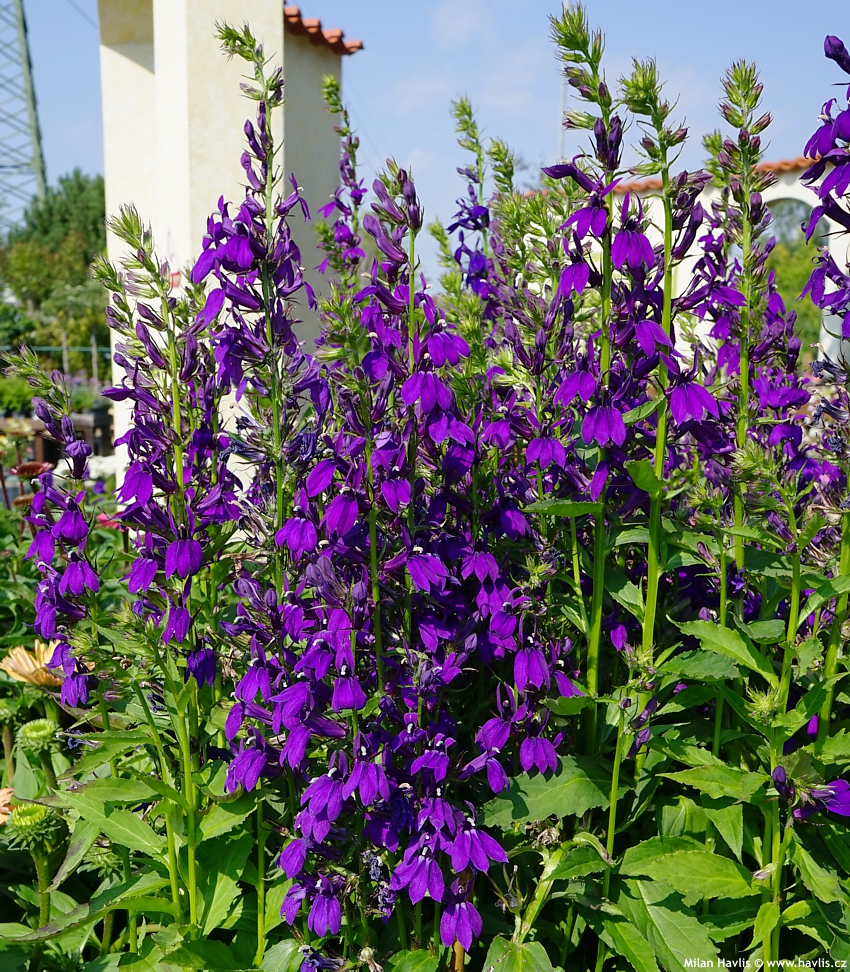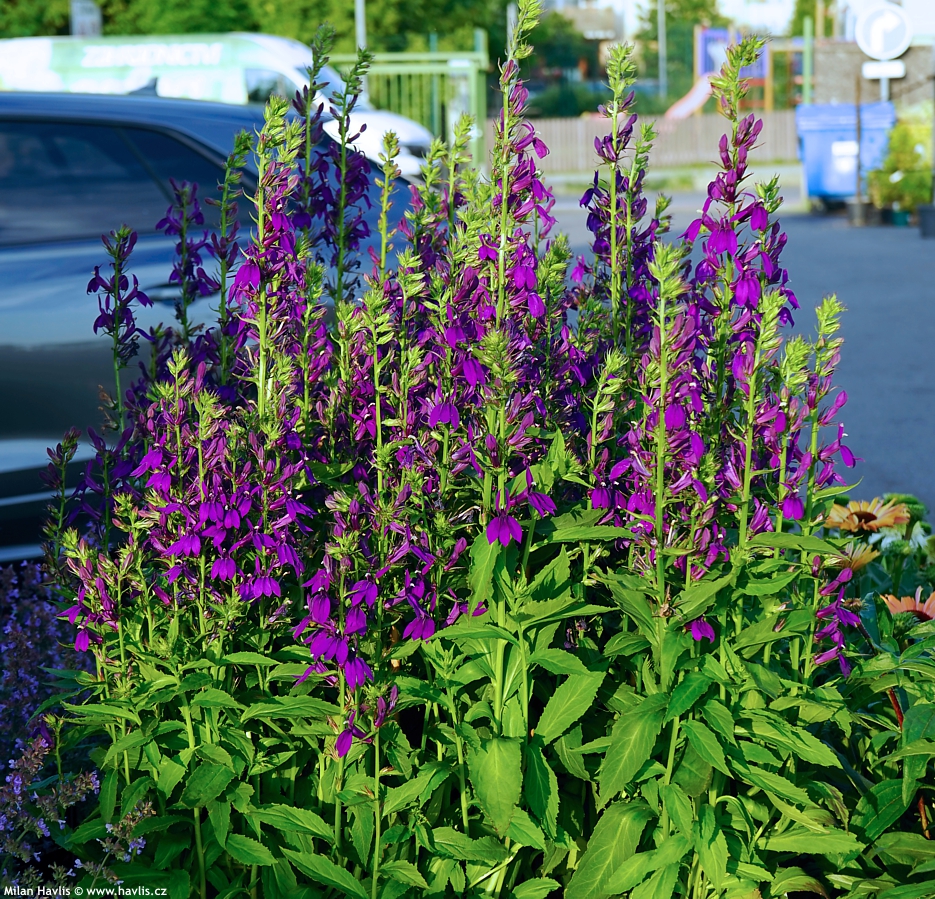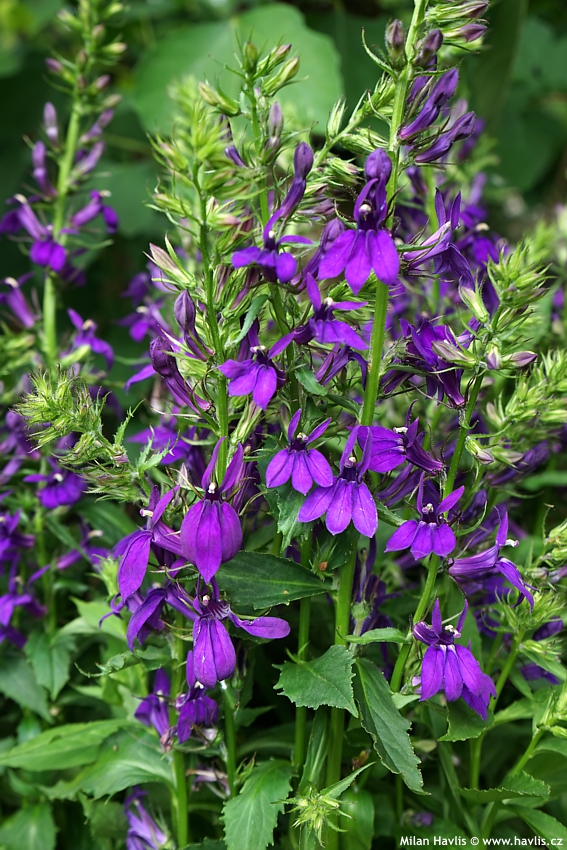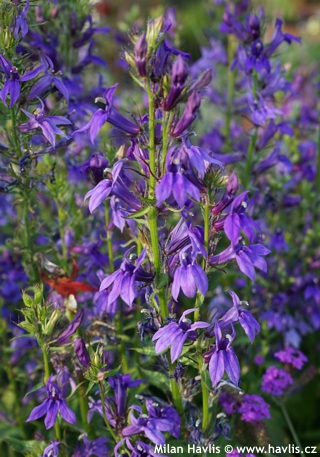Lobelia x speciosa 'Pas1302712' STARSHIP™ BLUE lobelia, cardinal flower
Lobelia
Lobelia, also called cardinal flower is a genus of at least 415 species known to date. Owing to this, many botanist prefer listing it under its own family lobeliaceae rather than campanulaceae where the plants belonged to formerly. Lobelias are found in moist lands and marshes all over the temperate and tropical parts of the world, most often in all Americas. They are grown as annuals or short-lived perennials with limited hardiness. Luckily, there a few hybrids which broke this rule. Just like lobelia x speciosa which is an interspecific cross of more species (l. siphilitica, l. fulgens, l. cardinalis). It was first described by an English botanist Robert Sweet (1783-1835), and now hybridizers breed new and improved varieties with longer life and better hardiness.
STARSHIP™ BLUE is one of the modern lobelia varieties offering first year flowering, longer life and reliable hardiness down to USDA zone 6. It is a part of a small STARSHIP™ series developed by Kieft Seeds, USA. STARSHIP™ BLUE makes stunning deep violet blue flowers atop fleshy, uniformly upright stems 50-60 cm tall. Blooming begins in about mid July and continues until late summer, or even early autumn if you regularly remove stems with spent flowers and feed the plant on regular basis. Leaves are lance-shaped, medium green, and glossy.
Lobelia needs constantly moist or partially wet ground and no drought - it dies quickly, especially during dry winters. It loves fertile, humus rich soil of any pH, and full sun. It will grow in partial shade, too, but as a long-day plant it will become short-lived with reduced sunlight. Regular feeding is recommended in poor soils, from June until August. The plant contains toxins, and releases sap when cut that may irritate skin or cause allergies. Hardiness tested down to -22 °C and expected to -24 °C (USDA zone 6).
Last update 22-07-2021

































